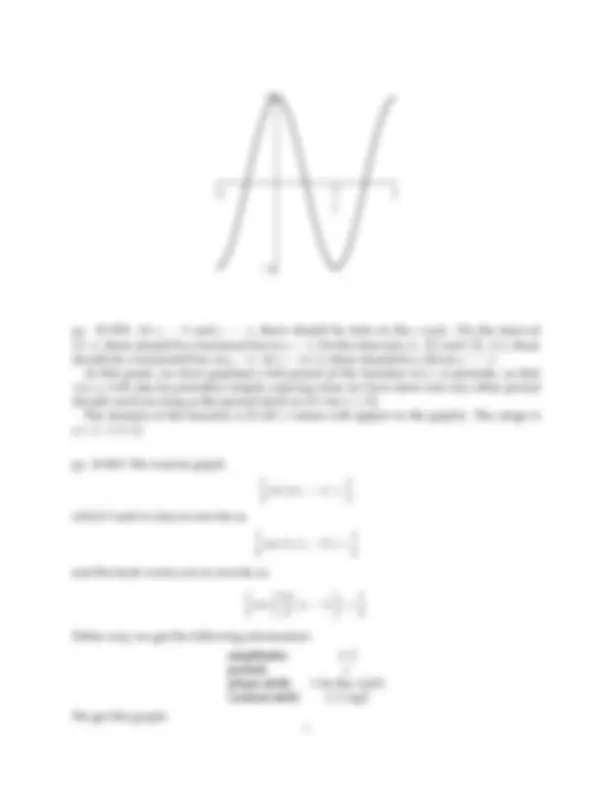




Study with the several resources on Docsity

Earn points by helping other students or get them with a premium plan


Prepare for your exams
Study with the several resources on Docsity

Earn points to download
Earn points by helping other students or get them with a premium plan
Community
Ask the community for help and clear up your study doubts
Discover the best universities in your country according to Docsity users
Free resources
Download our free guides on studying techniques, anxiety management strategies, and thesis advice from Docsity tutors
Solutions to selected problems from a trigonometry homework. It includes the use of half-angle and difference formulas, the application of the pythagorean theorem, and the determination of the period, amplitude, phase shift, and vertical shift for a given function. The document also provides the graphs for some of the functions.
Typology: Assignments
1 / 4

This page cannot be seen from the preview
Don't miss anything!



pg. 56, #48: Use the half-angle formula:
cos 2 π 12
= cos 2
( (^) π 6 2
1 + cos π 6 2
2
√ 3 2 2
√ 3 2 2
Another approach would use the difference formula:
cos 2 π 12
= cos 2
π
4
π
6
cos
π
4
cos
π
6
π
4
sin
π
6
Notice we get the same answer either way.
pg. 56 #8: We know tan x = 2 = 2
Pythagorean theorem,
radius 2 = opposite 2
r 2 = 2 2
r =
Thus sin x = 2
5 and cos x = 1/
pg. 56 #32: Applying the sum formula, we have
cos
x +
π
2
= cos x cos
π
2
− sin x sin
π
2 = cos x · 0 − sin x · 1
= − sin x.
pg. 56 #16: We want to graph y = cos (πx/2). Since B = π/ 2 (B is the the coefficient of x!)
we know the period is
2 π π 2
= 2π ·
π
The graph of the cosine is the same as the graph of the sine, only shifted to the left π/ 2 ,
like so:
x
−
−1.57 1.57 3.14 4.71 6.
1
This problem’s function has no shifts, so its graph will look exactly the same as the graph
of the cosine, but for the fact that its period is different:
1
0
−1 1 2 3
x